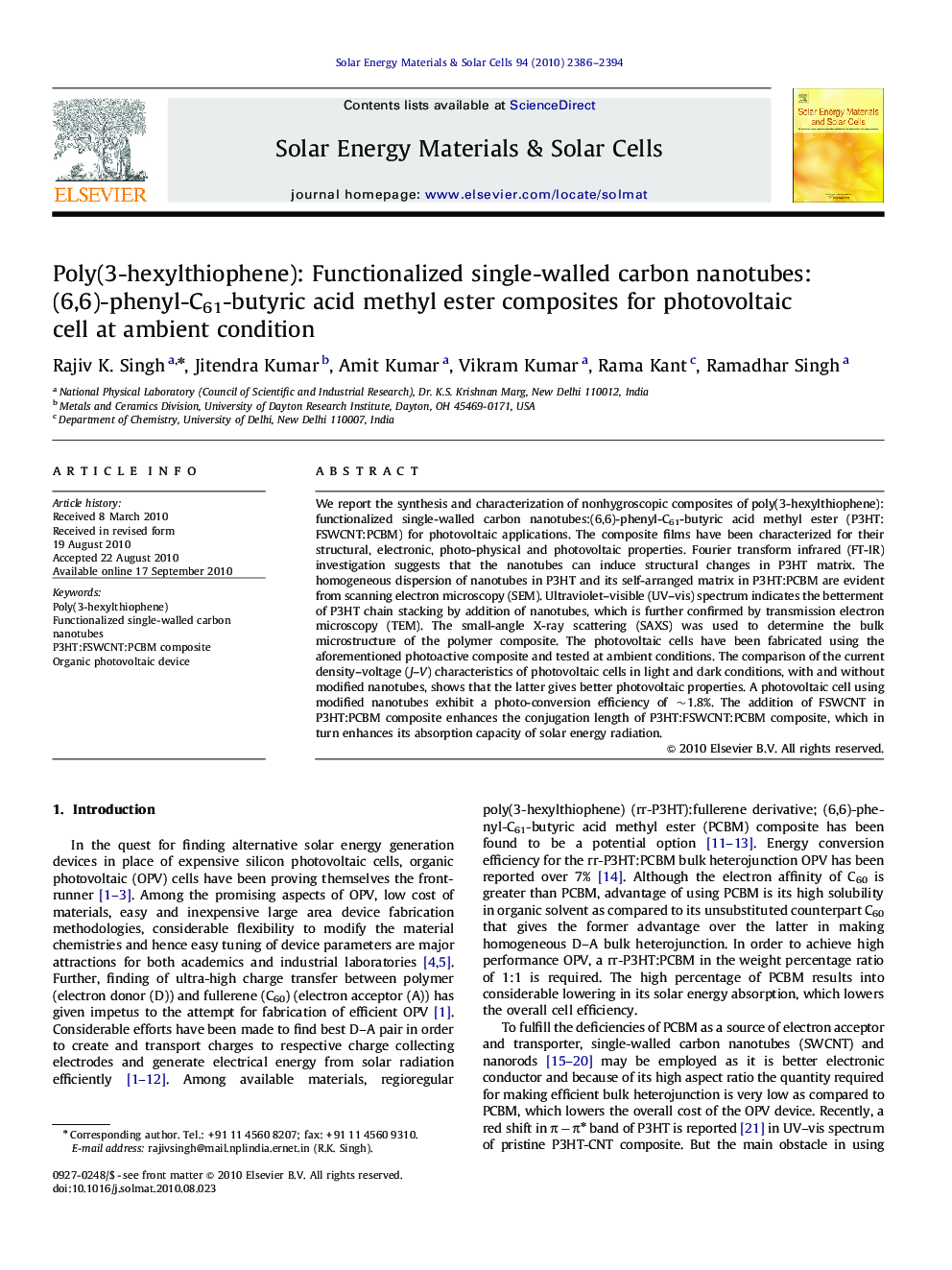| Article ID | Journal | Published Year | Pages | File Type |
|---|---|---|---|---|
| 79855 | Solar Energy Materials and Solar Cells | 2010 | 9 Pages |
We report the synthesis and characterization of nonhygroscopic composites of poly(3-hexylthiophene):functionalized single-walled carbon nanotubes:(6,6)-phenyl-C61-butyric acid methyl ester (P3HT:FSWCNT:PCBM) for photovoltaic applications. The composite films have been characterized for their structural, electronic, photo-physical and photovoltaic properties. Fourier transform infrared (FT-IR) investigation suggests that the nanotubes can induce structural changes in P3HT matrix. The homogeneous dispersion of nanotubes in P3HT and its self-arranged matrix in P3HT:PCBM are evident from scanning electron microscopy (SEM). Ultraviolet–visible (UV–vis) spectrum indicates the betterment of P3HT chain stacking by addition of nanotubes, which is further confirmed by transmission electron microscopy (TEM). The small-angle X-ray scattering (SAXS) was used to determine the bulk microstructure of the polymer composite. The photovoltaic cells have been fabricated using the aforementioned photoactive composite and tested at ambient conditions. The comparison of the current density–voltage (J–V) characteristics of photovoltaic cells in light and dark conditions, with and without modified nanotubes, shows that the latter gives better photovoltaic properties. A photovoltaic cell using modified nanotubes exhibit a photo-conversion efficiency of ∼1.8%. The addition of FSWCNT in P3HT:PCBM composite enhances the conjugation length of P3HT:FSWCNT:PCBM composite, which in turn enhances its absorption capacity of solar energy radiation.
Figure optionsDownload full-size imageDownload as PowerPoint slide
